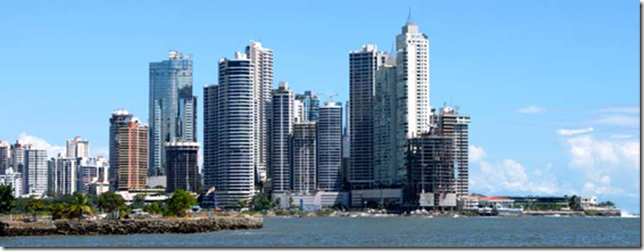General
Panama is on a roll. Due largely to the upcoming $5.25 billion expansion of the Panama Canal and the Latin American nation’s pending free-trade agreement with the United States; the Panamanian real estate market is poised for even more growth. The combination of population and job growth, government tax breaks and imminent legal and business reforms has created a favorable climate for both local and foreign investors. U.S. investment in Panama in 2004, the most recent data available, totals nearly $6 billion, up from $5.1 billion in 2001.
Population
As of July 2007, Panama has an estimated population of 3,242,173 people. Ethnically the country is mixed, a blend of indigenous, black and white, with some West Indian, Asian and Spanish. While Spanish is the official language, because of the country’s long relationship with the United States, English is widely spoken. The majority of Panamanians are Christian, mostly Roman Catholic, reflecting the country’s long history of Spanish colonial influence. The constitution guarantees freedom of religion and there are large Protestant, Jewish, and other faiths represented throughout the country. 
More than half the country’s population lives in the Panama City-Colon metropolitan corridor which follows the Panama Canal from Pacific to Caribbean. The area’s infrastructure is some of the best in the region due to the long US oversight.

For more info:
Government
Panama is a stable multi-party constitutional democracy, with three branches of government, much like the U.S., though the legislative branch has only one house. The current president is Martin Torrijos. While he is the son of the former strongman Omar Torrijos who ruled Panama in the 1970s and early 1980s, Martin Torrijos came to power in a free and open election in 2004. The government finished 2006 with a budget surplus of $576 million.
While the military has caused problems for Panama in the past, it has become a non-issue since the U.S. invasion in 1989. In 1990, the government of then President Guillermo Endara abolished Panama’s military and reformed the security apparatus, creating the Panamanian Public Forces. In 1994, Panama’s Legislative Assembly approved a constitutional amendment prohibiting the creation of a standing military force, but allowing the temporary establishment of special police units to counter acts of “external aggression”. According to the CIA Factbook, Panama currently spends approximately one percent of its GDP on security.
The Canal
Panama is probably most famous as the location of the Panama Canal. Although the concept of a canal near Panama dates back to the early 16th century, the first attempt to construct a link between the Pacific and Caribbean began in 1880 under French leadership. After this attempt failed, the project of building a canal was restarted by the United States in 1907, soon after Panama’s independence from Columbia, and was finished in 1914, when the canal opened. The building of the 48 mile canal was one of the most difficult engineering and construction projects of its time. Disease (particularly malaria and yellow fever) and landslides took their toll, with as many as 27,500 workers estimated to have died during construction. After the canal’s completion the U.S. controlled the canal and the land five miles on each side of it as a U.S. possession. However treaties signed in 1977 and 1979 set in motion the return to Panama of the Canal Zone in 1999 and the departure of U.S. personnel.
Today an estimated 15 percent of U.S. trade passes through the Panama Canal. With demand on the rise, container and cruise ships grow ever larger. Some of the most modern and efficient vessels are too large to fit through the canal. These so-called Post-Panamex container ships must instead travel around Cape Horn at the tip of South America. The canal has assumed increased importance in global trade because of the growing demand by US importers for all-water services between Asia and the East Coast. Shipping lines are responding to that demand by increasing the number of Panama Canal services, but the canal has limited ability to handle more ships. As a sign of the increased demand by shipping lines to use the canal, the Panama Canal Authority holds regular auctions for open time slots for transit of the canal. Recently a shipping company paid more than $200,000 just for an open time slot, plus the $250,000 or so the larger ships pay for the actual transit.
In October 2006, in a national referendum Panamanian voters approved expanding the canal to accommodate larger ships and more traffic. This $5.25 billion project will double capacity from 300 million tons to 600 million tons by adding a third set of locks that will accommodate container ships, cruise liners and tankers too wide for the current system. The project is expected to create 40,000 jobs before its completion in 2015. The canal has been a major source of revenue for the local economy. In 2005, the canal contributed $545.1 million to the government’s revenue for tolls ships paid to use it. One study estimates the Panama Canal Authority will pay $4.2 billion to the government in 2025, a decade after expansion is completed providing a steady income stream.
